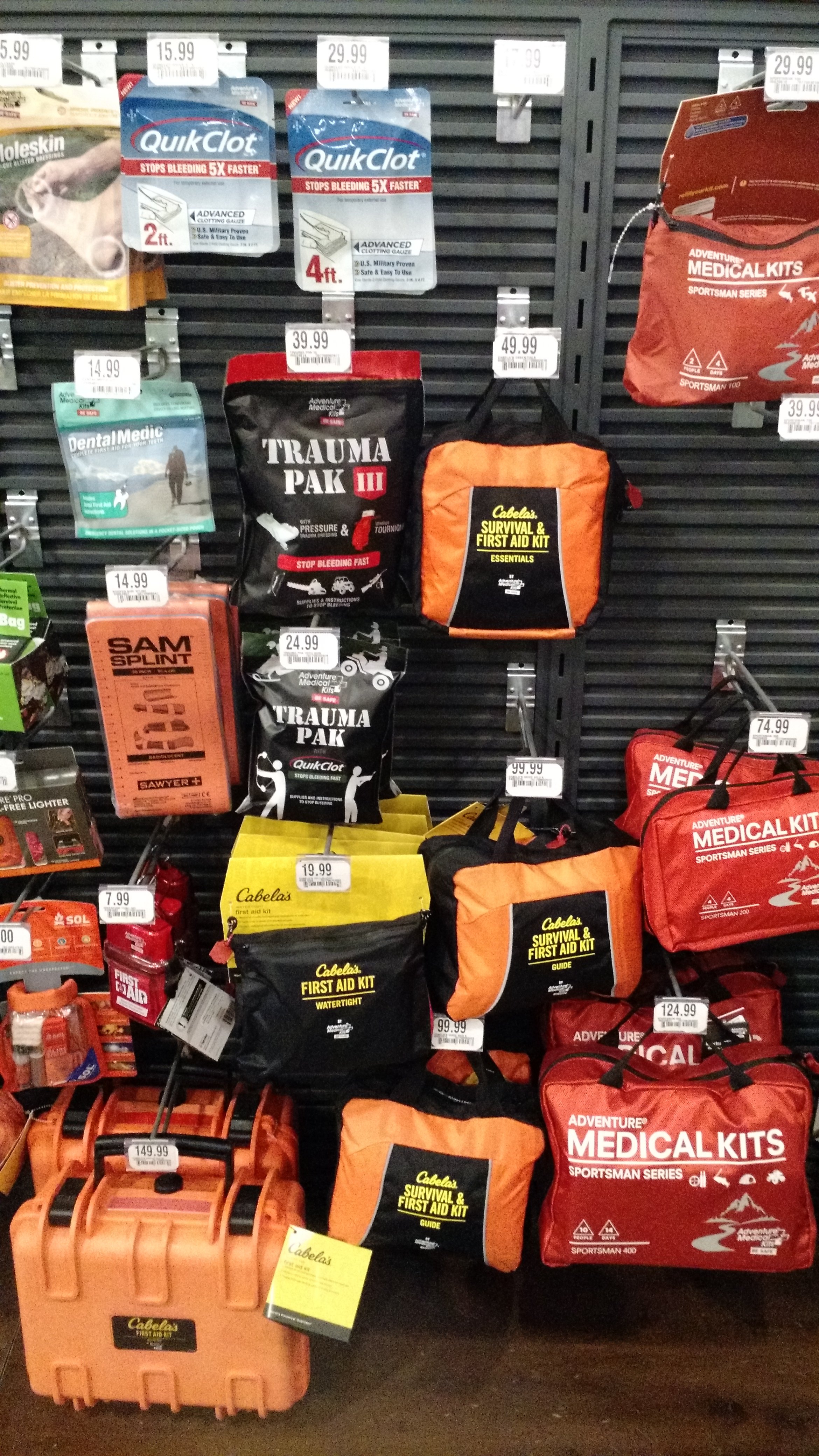Who’s Bringing the First Aid Kit?
You’ll hear this question when people are preparing for river trips. Who’s bringing the first aid kit? The news is that you are. You are bringing a first aid kit. Here are three reasons why.
1. Official first aid kits aren’t that great
On big multi-day trips, commercial trips, or highly organized trips like boy scouts or certain club trips, a first aid kit will be provided for you. You might think that means you don’t need to bring one, but think again. That official first aid kit might not be complete, or handy when you need it. It may have been raided by ten other people before you get to it. It might not have been fully resupplied after the last trip. It might be a crappy kit to start with. You can’t count on it.
There are no guarantees than an official first aid kit will have what you need. For bigger trips it’s worth asking what’s in the official kit, so you know what else to bring. If you bring what you need you will not end up desperately scrounging for things in someone else’s kit. When you have minor problems you’ll be able to take care of them before they become major.
2. You know how to put a bandaid on.
The lamest excuse ever heard for not bringing a first aid kit is “I don’t know first aid”. Most first aid kit use is for the most basic stuff, and if you don’t know how to do basic first aid, you should not go on the river. You shouldn’t even leave the house. You have absolutely no business going on a wilderness multi-day trip without at least basic first aid knowhow.
If you doubt yourself, take a first aid class. If you want to travel far from civilization, take a wilderness first responder course. You can stop bleeding without a first aid kit. Not knowing is a good reason to start learning, and in the meantime, bring band aids and sunscreen.
As a former guide and now doctor, I sometimes boat with people who think I am going to provide them with a solve-every-problem first aid kit. This is impossible. I know how to use what’s in my kit. You should know how to use what’s in yours. If you run into trouble you can’t deal with, ask for help. We’ve got you.
When we boat together, we rely on each other. Don’t get into river running expecting everyone else to take care of you. We need you to be prepared and resourceful.
3. First aid kits are expensive to build and resupply.
This sounds like a reason not to get involved, but really it’s the biggest reason why we all should bring a personal kit.
When doing day runs with friends, there probably won’t be a group first aid kit. Nobody wants to be responsible for it. It’s too big a task. It costs too much. And it puts the holder of the big kit in an awkward position. No one kit can cover everything that can happen, and no one person knows how to handle everything.
Rather than volunteering to bring a kit for the whole world, bring a small one for yourself. The goal is to improve your day when things go wrong. You’re not expected to solve every problem. If you can solve just one or two problems, you’re a big help.
Assorted first aid kits for sale—years ago. Prices have surely gone up.
Imagine the best crew in the world
When everybody brings a tiny kit, the whole group is better prepared. One guy might bring a roll of duct tape. Another might have hemostatic bandages and a tourniquette. My day trip kit is teensy but it has lots of basics and gets used constantly. The most popular items are the gorilla tape, fingernail clippers and chocolate-covered espresso beans (which are excellent for re-invigorating exhausted swimmers).
The everybody-bring-something rationale applies to rescue gear, communications, and backup equipment like spare paddles. Don’t assume that someone else is bringing the rope; we all bring ropes. If nobody brings a take-apart paddle, then you’ll be walking—or handspaddling—when you lose yours. If you paddle with a bunch of pinheads who don’t think ahead and aren’t prepared to help each other out, you will learn all this the hard way.
If you boat with a crew in which nobody brings anything because somebody else is (supposedly) taking care it, you are all screwing up. You can do better. Get your crew started on the right track by modeling preparedness. Put together a starter first aid kit, or refresh an old one. Carry basic rescue gear and know how to use it. Be the person who can help out the pinheads until they learn. Once they catch on they’ll be ready to help you out when you need it. Because that’s what we all want: a solid crew that has our back.
